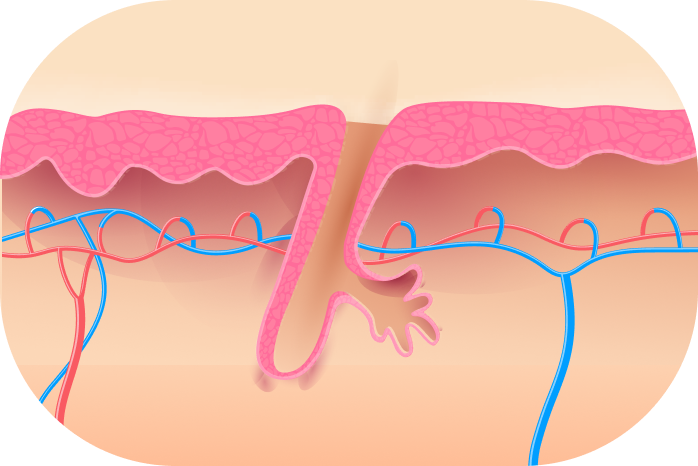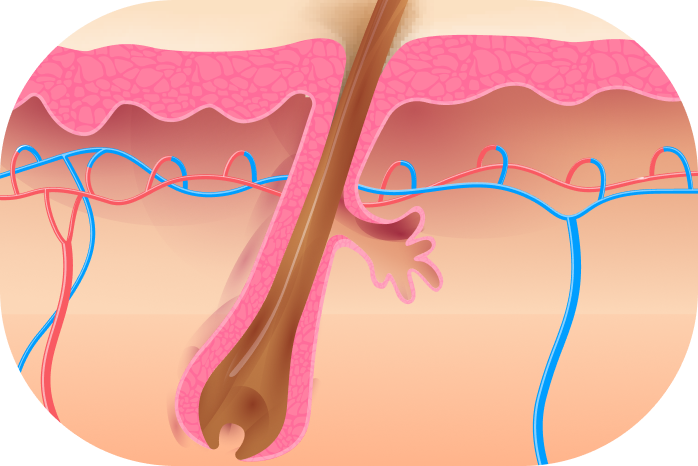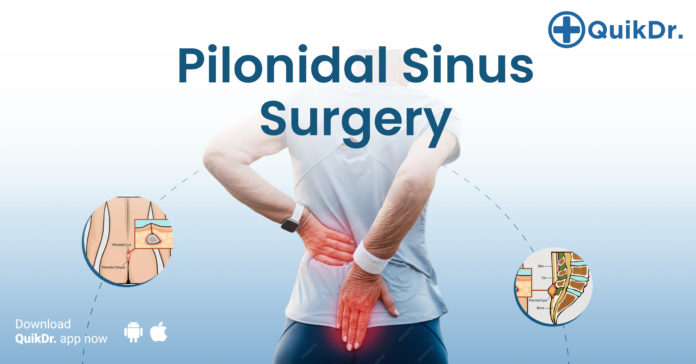A pilonidal sinus is a small tunnel or hole that forms in the skin, usually at the top of the cleft between the buttocks. This condition often occurs when hair, dirt, and debris become trapped in the skin, leading to an infection or the formation of a cyst. In some cases, pilonidal sinuses can cause pain, swelling, and drainage of pus.
Surgery is a common treatment for pilonidal sinus, and there are different surgical approaches depending on the severity and recurrence of the condition. Here are some key points about pilonidal sinus surgery
Pilonidal Sinus
A pilonidal sinus refers to a tiny opening or passageway in the skin that is prone to infection, commonly developing in the crease at the upper part of the buttocks. When infected, this sinus can transform into an abscess or cyst, typically containing hair, dirt, and debris. The resultant pilonidal cyst can induce intense pain, discharge pus and blood, and emit a noticeable odor. This type of infection predominantly occurs in males and is prevalent among young adults, particularly those who spend extended periods in a seated position, such as cab drivers.

Pilonidal Sinus Cost surgery
The cost of pilonidal sinus surgery can vary widely depending on several factors. These factors include the type of surgery performed, the surgeon’s fees, hospital or clinic fees, anesthesia fees, and the geographic location of the medical facility. Additionally, the inclusion of pre-operative and post-operative care, as well as any necessary medications, can contribute to the overall cost.
Here are some general considerations related to the cost of pilonidal sinus surgery:
- Type of Surgery: The specific surgical procedure chosen by the surgeon will have a significant impact on the cost. Less invasive procedures, such as incision and drainage, may be less expensive than more extensive excisional surgeries or flap procedures.
- Surgeon’s Fees: The experience and reputation of the surgeon can influence their fees. Surgeons with more expertise may charge higher fees.
- Hospital or Clinic Fees: The facility where the surgery takes place will contribute to the overall cost. Hospitals typically have higher overhead costs than outpatient clinics.
- Anesthesia Fees: If the surgery requires general anesthesia or sedation, the fees for the anesthesiologist or nurse anesthetist will add to the overall cost
Causes of Pilonidal Sinus
The precise cause of an infected pilonidal sinus remains uncertain, but it is thought to result from a combination of factors, including hormonal changes (since it typically occurs after puberty), hair growth, and friction caused by clothing or prolonged periods of sitting.
Activities that generate friction, such as sitting, can compel the hair in the affected area to penetrate beneath the skin. The body perceives this intruding hair as foreign, triggering an immune response akin to its reaction to a splinter.
This immune response leads to the formation of a cyst around the hair, and occasionally, an individual may have multiple sinuses that interconnect beneath the skin.
Treatment of Pilonidal Sinus
Non-Invasive Treatment:
If your condition is diagnosed early, lacks severe pain, and shows no signs of inflammation, your doctor may opt for conservative treatment. This typically involves prescribing a broad-spectrum antibiotic, effective against a wide range of bacteria. While this won’t heal the sinus tract, it provides relief from infection and discomfort. Your doctor will advise regular follow-up exams, suggest hair removal or shaving at the site, and emphasize proper hygiene.
Lancing:


To address symptoms arising from an abscess or pus collection within the sinus, your doctor may recommend lancing. Before this procedure, a local anesthetic is administered. The doctor uses a scalpel to open the abscess, removing hair, blood, and pus. The wound is then packed with sterile dressing, allowing it to heal internally. Typically, healing occurs within four weeks, and further treatment is often unnecessary.
Phenol Injection:
In this treatment, a local anesthetic is administered before injecting phenol, an antiseptic chemical compound, into the cyst. Multiple injections may be required, causing the lesion to harden and close. Due to a high recurrence rate, this treatment is uncommon in the United States, and surgery is often preferred in certain cases.
Surgery:
For recurring pilonidal sinus infections or cases with multiple sinus tracts, surgical intervention is recommended. After administering a local anesthetic, the surgeon opens the lesions, removing all pus and debris before stitching the wounds closed. Post-surgery, your doctor will provide instructions on dressing changes and may recommend shaving the site to prevent hair from entering the wound.
Symptoms
While a pilonidal cyst may be asymptomatic, an infection can lead to noticeable signs. An infected cyst may result in swelling and pain in the surrounding skin. Symptoms of an infected pilonidal cyst encompass:
A depression near the upper buttocks crease.
Discomfort.
Inflammation and swelling of the skin.
Discharge of pus or blood from a skin opening.
An unpleasant odor emanating from draining pus.






